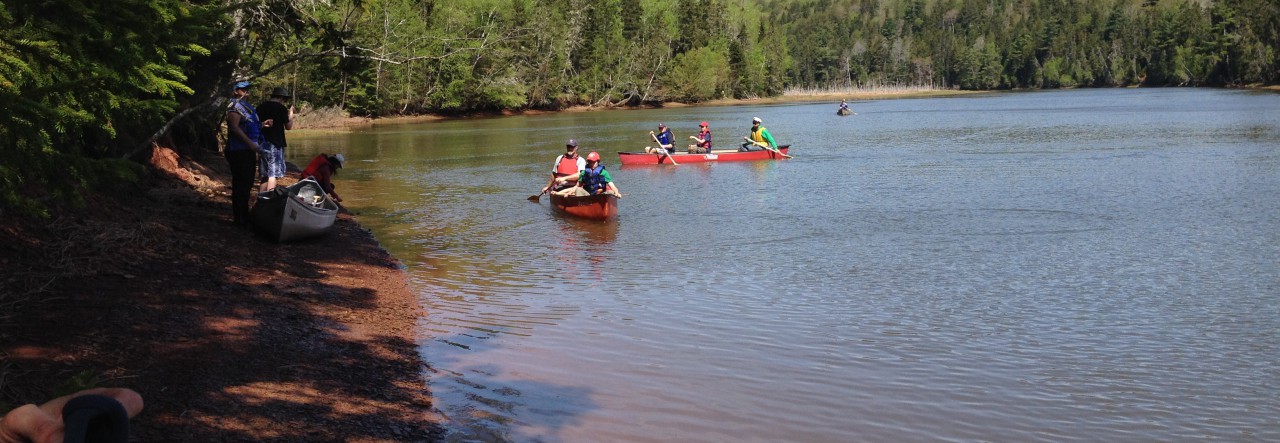This one raises an issue about radon, but has anyone actually heard about his concern? Perhaps we all need to start asking about it.
http://www.theguardian.pe.ca/Opinion/Letter-to-editor/2014-03-06/article-3639414/Deep-water-wells-will-spray-radon-into-air/1
Deep-water wells will spray radon into air
Letters to the Editor (The Guardian)
Published on March 06, 2014
A readerʼs view
Editor:
P.E.I. groundwater contains radon as a dissolved gas. Have the deep-water wells in Prince and Queens counties received a radiological assessment? For I believe there are meteorological and health consequences to their operation. Specifically, what are the activities of radon, 86Rn222, in these wells? How does it compare with shallow water wells? What is the airborne maximum permissible concentration (MPC) of radon on P.E.I.?
If you irrigate with P.E.I. groundwater by spraying, in the flight of the water droplets through the air, radon will evaporate out of the water droplet, effectively what is called an air stripper; now a radon stripper. Some radon evaporates (stripped out), some doesnʼt. The radon stripper effect will form a radioactive radon gas cloud, a radon plumb. The radioactive half-life of 86Rn222 is 3.8 days, and a significant concentration of radon may occur near the spraying source in light winds as well as down wind.
When radon decays it emits an alpha particle of 5.5 million electron volts, very energetic.
Electrons are stripped off diatomic oxygen and nitrogen molecules in the air and it takes about 30 electron volts to create one ion pair. This is referred to as ionization or ionizing radiation. Do the math: divide 5.5 million by 30 and you
get ~183,000 ion pairs from one alpha particle.
There is a background level of ionization in the atmosphere caused by cosmic rays and background radiation. Airborne irrigation will add to this considerably; so much so that the resistance of the earth atmosphere is decreased, the electrical field of the earth arcs over, and you have thunder and lightning.
Last summer I heard thunder over Hunter River or Cavendish and there wasnʼt talk of any electrical disturbances on the newscast nor were the clouds thunderheads. I believe now this thunder most likely was caused by the deep-water wells spraying radon in the air in Prince and Queens counties of P.E.I. Friends say: “I heard that too.”
Health Canada should also look into the health consequences of the deep water wells.
As a public health matter, it will also prove useful to know the MPC of radon for groundwater, as municipal wells are also involved, at least indirectly.
Tony Lloyd,
Mount Stewart
———-
And a bit on the Lands Protection Act review:
from the Commissioner’s Report, page 21, with my inserts and deletions:
Questions Regarding the Strategies (those documents cited a few days ago that looked at farming issues and the future):
The 1,000 and 3,000 acre limits were by far the dominant issue in public meetings held by the Commission. Calls for increasing the limits came mainly from the potato industry, through the Federation of Agriculture and the Potato Board. Not all farmers and not all agricultural organizations called for increasing the limits however. The National Farmers Union opposes any change to the Lands Protection Act and Regulations. Among non-farm groups and individuals, the vast majority favoured the status quo.
Two other points of view were expressed:
1. There still needs to be a limit on how much land a person or a corporation can own and control; and
2. The door should be left open for someday lowering the aggregate land holding limits.
Bearing all this in mind, the question must therefore be asked: If none of the provincial and industry strategies mentioned above calls for increasing farm size as a way to improve farm profitability, enhance rural development, strengthen tourism, or promote environmental sustainability, on what basis can increasing the aggregate land holding limits be justified?
In this regard, the Commission sought answers to the following questions:
1. What is the relationship between potato acreage and profitability for a potato farm?
2. What is the evidence that the present aggregate land holding limits are having a negative impact on the profitability of individual potato farms?
3. If further consolidation occurs in the potato sector, what impact will this have on employment and contribution to provincial Gross Domestic Product?
4. If further consolidation occurs in the potato sector, what impact will this have on rural communities?
5. How does the Agricultural Crop Rotation Act fit into the picture? To what extent is it being enforced? In other words, how many potato producers are in full compliance?
6. Given current aggregate land holding limits under the Lands Protection Act, has the Agricultural Crop Rotation Act become a deterrent to future growth of the potato sector?
7. Should the Agricultural Crop Rotation Act be changed, or can ways be found to use it, in combination with the Lands Protection Act and government programs, to encourage better land management practices?
8. What is the impact of the ‘double- counting’ provision that requires landowners to include both land leased in and land leased out as part of their aggregate land holdings? What would be the benefit, if any, of removing the requirement to count land leased out?
9. What are the problems with the Environmental Exemption Regulations introduced in 2009 as they are currently written and enforced? Can they be changed to better reflect the needs of the agriculture industry, or should they be abolished?
———-
So onto the what he actually recommended next.
